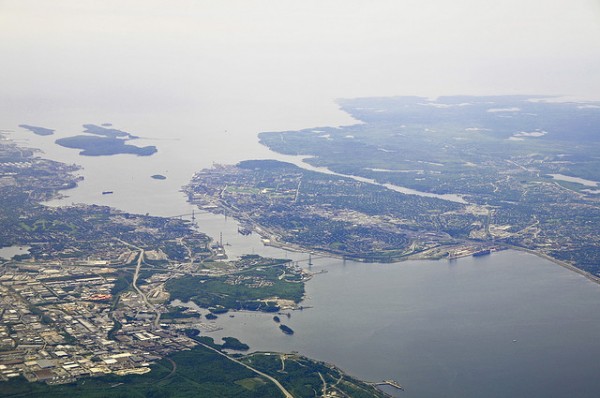Editor’s Note: The following is Our HRM Alliance‘s response to the proposed revisions of HRM’s RP+5
HALIFAX – The proposed revisions to the Regional Plan are seriously flawed. They neither meaningfully incorporate input from the public nor from stakeholders. The Plan will not enable the Halifax Regional Municipality to achieve its targets, and grow in an economically, environmentally and socially sustainable way.
The Regional Plan is HRM’s blueprint for how, where, and when growth and development should take place. It sets very modest goals for balancing growth at 25% urban, 50% suburban and 25% rural. It provides minimal guidance on how it will concentrate this growth in Centres where it could be more easily and cost-effectively serviced by the Municipality. However, in the first five years of the Regional Plan HRM fell short of these modest goals with low urban growth, and a failure to concentrate growth in regional centres.
In other words, HRM is sprawling in an unsustainable way.
A report recently released by HRM found that continuing to fall short of our growth targets will cost the Municipality and its residents $670 million over the next 20 years. The report further found that comparing the status quo to a more concentrated growth pattern of 50% residential growth in the urban core, would save HRM and its residents close to $3 billion over the next two decades. In other words, failing to concentrate growth and achieve our goals comes with a very real cost that will increase tax bills and the cost of living for HRM residents across the board. The five-year review process should address this reality.
With this in mind, the Our HRM Alliance proposed seven reasonable solutions. The 44 member groups represent a broad cross-section of business, environmental, health, recreational and other community groups from all parts of the HRM. They came together and agreed on seven practical solutions that would get the HRM back on track to meeting its targets. The Alliance’s vision is to make Halifax Regional Municipality a more liveable and more sustainable place to reside, work and play. Our objectives include a healthy and active population, a robust mobility system, and vibrant community centres across the entire Municipality.
Our Seven Solutions have achieved widespread public and political support, as evidenced by commitments from councilors in the recent Municipal election, comments from the public through the public consultation process, and the input of the Community Design Advisory Committee. In particular, staff were directed to put Greenbelting in the revised Regional Plan. Despite this widespread support, and the obvious and significant cost of continuing HRM’s
present development pattern, the Alliance does not feel there has been sufficient progress in incorporating its Seven Solutions into the revised Regional Plan.
While modest progress has been made in some areas of the Plan, in other areas the revised Plan has actually moved backwards from the current Plan. The Alliance does not feel that the proposed Plan has any more teeth than the current Plan to ensure that growth is directed appropriately. In fact, the current revisions of the Plan have even fewer teeth. While all the specific deficiencies are too numerous to note, we have particularly identified the following four areas where the Plan needs to be improved:
- Directing Growth: The Plan needs a clear delineation of where growth should occur, where it should not occur and where it should happen with caution. The Plan provides too much wiggle room in this regard. In particular, HRM policies SU-15 and G-16 make it possible to develop in zones adjacent to a zone where development is already permitted. HRM is required to have 15 years’ worth of land ready for development. At the moment, it has over 30 years’ worth of approved lots in the suburban area alone.
- Greenbelting and Priority Plans: Too many important issues have been left to be developed in priority or functional plans, with no direction as to when these will be completed or what they will contain. For example, the term “greenbelting” is included, but is not defined, and the details are left to a priority plan. We need Greenbelting in the Plan itself, with defined boundaries on where the municipality will grow.
- Transportation: The current transportation chapter focuses on road network projects rather than on making it easier for all people to get from place to place. HRM should be advocating for more active transportation and healthier lifestyles through its mobility plans. Details of how residents are going to shift their mobility habits is necessary. References to the widening of Bayers Road and a third harbour crossing should be eliminated.
- Inadequate Measures to Monitor Success: Appendix A gives reasonable measures but does not set targets or timelines. HRM will be required to monitor the right things but it has no plan of action on whether that measure should be increasing or decreasing, or how it will and when it will change.
As it stands the Plan is not adequate to achieve stated growth targets nor ensure that future growth is sustainable. As such, in its present form the Alliance is unable to support the proposed draft Regional Municipal Planning Strategy (version 2.0). The Alliance will oppose it if and when it comes before Regional Council, unless, at a minimum, the above changes are made.
HRM RP+5 Open House and Public Forum:
When: Monday, June 17, 2013
Open House: 4:30 – 6:30 pm
Forum: 6:30 – 9:00 pm
Where: Holiday Inn Harbourview, Lake City Ballroom & Terrace, 101 Wyse Road, Dartmouth (map)
Our HRM Alliance is made up of groups from the rural, suburban and urban core of Halifax Regional Municipality. Its Steering Committee includes the Ecology Action Centre, St. Margaret’s Bay Stewardship Association, Five Bridges Wilderness Heritage Trust, Sackville Rivers Association, the Downtown Halifax Business Commission, and Fusion Halifax.
Image by wintorbros

